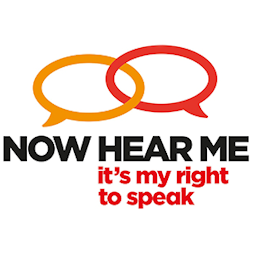
Augmentative and Alternative Communication (AAC) describes the things people can use to let their voice be heard. Just driving along a road, we recognise the signs giving us instructions. Even most non drivers know what they mean and we can talk about those things to others.
But what if we don’t have the ability to say what we want in the traditional way, using our own voices and replying instantly?
Imagine if you lived in a world where people couldn’t understand what you wanted to say. How frustrating would that be?
ACC helps people to communicate with each other. Some people may take longer to get their point across, or need to use pictures, symbols or technology to say what is in their heads, but we all deserve the extra time it takes for them to be able to say it.
My own special needs son often uses pictures and symbols to describe his emotions as he can’t put them into words. When he goes to respite and there are more physically disabled children, I’ve seen him use sign language to communicate with them. It’s a lovely thing to see.
AAC helps people recognise the signs an symbols of life, even simple things like pictures, hand gestures, pictures and the vast amount of technology on the market today. What works for one person may not necessarily work for another, but they all allow people to share those common goals of understanding and being understood.
The NHS wants to increase knowledge by the public of how 0.5% of our population can be better helped to let their voice be heard. I think it’s an important thing for us all to be aware of. Just a little patience and understanding could mean so much to someone who needs a little extra help to get their opinions across.
It’s difficult to put some of this into words, so I’ve added a couple of videos from the Now Hear Me campaign that explain it much better than I ever could.
Listen to Gavid Drysdale talk about using ACC and vocal aids to lead a full life.
Watch Rachel Monk and how her friends and education have grown with the assistance of ACC.
This is the advice from the ACC on what we can do to help and listen.
What can you do?
Recognise that a right to ‘speak’ and be ‘heard’ is a fundamental human right, whether through verbal speech, gesture, signing, picture board or high tech device. Communicating is a fundamental piece of who we are and everyone deserves to be given the time and space to do it.
Recognise that everybody is different and that we all communicate in a variety of ways. AAC is not a single tool or approach that will help everybody. There is a range, and people who use AAC want others to support them to communicate in the way they find most effective.
People who use AAC need you to be patient. Try to make sure you give people using AAC extra time to get their message across even though this can sometimes feel uncomfortable for you. It is ok to say that you would like to check that you have understood a person’s message by asking them a few questions.
Address the person, not their carer or anyone else who might be with them.
Remember communication is a two way process. It involves information going in two directions – both being expressed and understood. Sometimes people who use AAC to express themselves might have difficulties understanding what you say to them – for example if they have problems with their hearing or interaction skills. It is important to not make assumptions and to ask the person what works best for them to help them communicate with you.
Find out more with the NHS.
Written in collaboration with the NHS for the Now Hear Me Campaign.




Everyone has a right to be heard. http://t.co/aSsrRU3Rab Find out about ACC from the NHS……..
RT @Scottish_Mum: Everyone has a right to be heard. Find out about ACC from the NHS. http://t.co/cVAu6FlQCj